Doctors and public health officials know that people who use marijuana or other forms of cannabis may be affected by symptoms of depression more often than people who don’t use cannabis. People affected by depression may get involved in cannabis use because they believe the drug will make them feel better. However, they may also get involved because they knowingly or unknowingly believe that cannabis use will reinforce their dysfunctional state of mind. In a study published in March/April 2014 in the Journal of Addiction Medicine, a team of American researchers investigated whether positive or negative cannabis-related expectations best explain use of the drug in people with depression symptoms.
Depression And Treatment
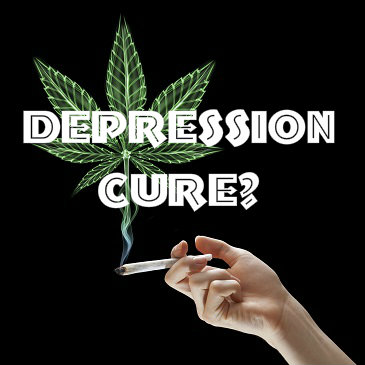 Current evidence indicates that depression is not directly related to increased chances of involvement in cannabis use. Instead, for a number of reasons—including genetic predisposition and exposure to certain environmental factors—people who receive a depression diagnosis are statistically more likely to use marijuana or some other form of cannabis than people who don’t receive such a diagnosis. In some cases, individuals already impacted by the effects of depression may turn to marijuana in an attempt to ease the strain of their mental health symptoms. In other cases, habitual cannabis users may undergo personality changes that feature depression-like effects or actual diagnosable depression symptoms. People who self-medicate their depression symptoms with marijuana or other forms of cannabis sometimes experience a temporary improvement of those symptoms; however, in the long run, this type of drug use can easily worsen existing cases of depression and leave affected individuals with a significant decline in their mental/emotional well-being.
Current evidence indicates that depression is not directly related to increased chances of involvement in cannabis use. Instead, for a number of reasons—including genetic predisposition and exposure to certain environmental factors—people who receive a depression diagnosis are statistically more likely to use marijuana or some other form of cannabis than people who don’t receive such a diagnosis. In some cases, individuals already impacted by the effects of depression may turn to marijuana in an attempt to ease the strain of their mental health symptoms. In other cases, habitual cannabis users may undergo personality changes that feature depression-like effects or actual diagnosable depression symptoms. People who self-medicate their depression symptoms with marijuana or other forms of cannabis sometimes experience a temporary improvement of those symptoms; however, in the long run, this type of drug use can easily worsen existing cases of depression and leave affected individuals with a significant decline in their mental/emotional well-being.
Drug Use Expectations
All people who drink or take drugs have expectations about the effects likely to stem from their substance use. Some of these expectations are “positive,” meaning that users believe they will feel better or otherwise gain a benefit from their intake of a given substance. Other expectations are “negative” and focus on the harms associated with the use of alcohol or drugs. As a rule, a person’s expectations influence his or her likelihood of getting involved in substance use. In real-world terms, this means that people who expect positive or beneficial results from drugs or alcohol have a higher chance of participating in substance use than people who expect negative or harmful results. In addition, positive or negative expectations of the impact of substance use can alter the ongoing experience of drug- or alcohol-related effects in active users.
Expectations In Depressed Individuals
In the study published in the Journal of Addiction Medicine, the U.S. research team used a test called the Marijuana Effect Expectancies Questionnaire (MEEQ) to assess the positive and negative expectations toward cannabis use in a group of 100 military veterans diagnosed with cannabis dependence (now known as one component of cannabis use disorder). These study participants also took another test, called the Inventory of Depression and Anxiety Symptoms (IDAS), designed in part to identify the presence of potentially diagnosable depression. In addition, all of the participants submitted information on the amount of cannabis they had consumed in the three-month period prior to the beginning of the study.
The researchers used a complex form of analysis to compare the results of each participant’s MEEQ and depression tests, and then used this comparison to help determine whether depressed cannabis users have positive or negative expectations toward intake of the drug. After completing their analysis, they concluded that cannabis use and depression are indirectly linked through positive expectations that depressed individuals hold regarding cannabis use. They did not find the same link between depression and negative expectations about cannabis use. The researchers found that the indirect link between depression and cannabis use is specifically related to a depression symptom called dysphoria, which revolves around an unusual state of unease, malaise or discomfort.
Researchers use the term indirect cause to describe contributing factors that help bring about a situation or condition, but don’t entirely account for that situation or condition like a direct cause. This means that, according to the conclusions made by the authors of the study published in the Journal of Addiction Medicine, positive expectations about the effects of cannabis help partially explain why depressed people use the drug, but don’t entirely explain why. Based on their findings, the authors believe that further examination of the impact of dysphoric depression symptoms may help broaden current understanding of why military veterans, in particular, begin using marijuana or other forms of cannabis.
Topiramate (Topamax) is a prescription medication originally developed as a treatment for certain seizure disorders. Doctors also sometimes prescribe this medication to people affected by other serious health issues, including alcohol addiction. In a study published in May 2014 in the journal Drug and Alcohol Dependence, researchers from two Dutch institutions explored the potential usefulness of topiramate as a treatment for people addicted to crack cocaine. These researchers found that only a small subset of individuals addicted to this form of cocaine clearly benefit from topiramate use.
How Does Topiramate Work?
Specific seizure disorders treated with topiramate include Lennox-Gastaut syndrome and certain forms of epilepsy. The medication helps people affected by these conditions by easing excessive nerve activity inside the brain. This same effect on brain function can also help stop migraine headaches from occurring.
When given to people affected by alcoholism, topiramate can diminish the severity of some of the symptoms associated with alcohol withdrawal, and can thereby help reduce the likelihood that a recovering alcoholic will lapse back into active drinking. Doctors may also prescribe the medication to people affected by medically serious forms of obesity. Available forms of topiramate include tablets and specially designed granules that users can release from a capsule and mix with food.
Topiramate And Cocaine Addiction
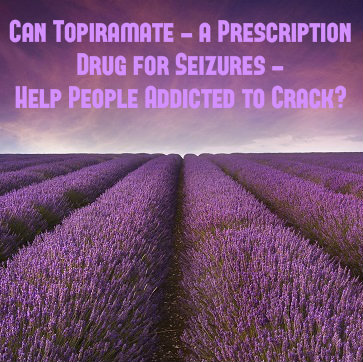 There is no medication in doctors’ treatment arsenals approved to help people affected by cocaine addiction. Instead, successful treatment typically depends on a form of behavior modification therapy called cognitive behavioral therapy or on other non-medication-based therapeutic options. Addiction researchers are actively looking for new medications that could help people addicted to cocaine, as well as existing medications that could be adapted for use in cocaine addiction treatment.
There is no medication in doctors’ treatment arsenals approved to help people affected by cocaine addiction. Instead, successful treatment typically depends on a form of behavior modification therapy called cognitive behavioral therapy or on other non-medication-based therapeutic options. Addiction researchers are actively looking for new medications that could help people addicted to cocaine, as well as existing medications that could be adapted for use in cocaine addiction treatment.
In a study published in October 2013 in the American Medical Association journal JAMA Psychiatry, a multi-university research team studied the effects of topiramate on 71 adults impacted by cocaine addiction. These researchers concluded that, compared to recovering addicts who don’t receive the medication while undergoing cognitive behavioral therapy, those who receive both topiramate and cognitive behavioral therapy experience improvements that include longer periods of cocaine abstinence (verified by an increased number of cocaine-free urine drug tests) and a reduced craving for further cocaine intake.
Potential Usefulness Of Topiramate In Crack Cocaine Treatment
Crack cocaine is powdered cocaine that has undergone an additional step of chemical processing. While the two forms of the drug have the same basic brain effects, crack only produces these effects for a relatively brief amount of time. This means that users of this form of cocaine may take the drug more frequently, and therefore may have greater odds of eventually experiencing the long-term brain changes associated with cocaine addiction.
In the study published in Drug and Alcohol Dependence, researchers from Parnassia Addiction Research Centre and the University of Amsterdam specifically investigated the potential usefulness of topiramate treatment in people addicted to crack cocaine. Thirty-seven participants in the study received a 12-week combination of topiramate and cognitive behavioral therapy, while another thirty-seven participants only received cognitive behavioral therapy.
The researchers mainly measured the effectiveness of topiramate treatment by comparing the rate of continued program involvement among recipients of the medication to the rate of continued involvement among those who did not receive the medication.
Variance Factors In Topiramate Use
In addition, they assessed such things as the regularity with which participants took their prescribed topiramate, the presence of negative side effects in the topiramate users, the ability to avoid using cocaine or other substances, the ability of medication users to interact in socially appropriate ways and the level of satisfaction that the topiramate recipients expressed toward use of the medication.
After completing their assessments, the researchers found that topiramate didn’t produce any serious side effects in the study participants. However, they also found that most of the medication recipients did not take it on a regular basis. In addition, they concluded that use of topiramate neither increased the length of involvement in cocaine addiction treatment nor generally contributed to a reduction in the consumption of cocaine or any other substance.
Critically, one group affected by crack cocaine addiction did benefit from topiramate use: those individuals simultaneously impacted by an addiction to opioid drugs or medications. This subset of addicts significantly lowered their cocaine intake while taking topiramate.
Importance Of Consistency Of Topiramate Use
The authors of the study published in Drug and Alcohol Dependence link the low level of topiramate effectiveness in crack cocaine addicts to highly inconsistent intake of the medication. Because many people in treatment don’t maintain their medication routines, the authors believe that topiramate may only play a relatively minor role in addressing the effects of crack cocaine addiction.
If you or a loved one is struggling with cocaine or any other addiction, call us now! We are here to help you!
Read More About The Addiction Treatment Uses For Topiramate
Research studies in the area of substance abuse often lead to new strategies for treatment, or the tossing out of treatments that are proven ineffective. Research is also used to show how trends in the use of certain substances change over time, or among different segments of the population. Public policy requires information that accurately reflects the trends in substance use in order to establish laws and regulations that discourage substance abuse. A study illustrates the inaccuracies that plague state reporting agencies when determining the cause of death in a traffic accident.
According to the study by National Institute on Alcohol Abuse and Alcoholism (NIAAA) researchers there were more than 450,000 U.S. traffic deaths between 1999 and 2009. In many of these cases alcohol was involved but was not referenced on the death certificates as cause of death. While correct causes of death on death certificates may seem trivial, injuries remain the leading cause of death in the U.S. for individuals under the age of 45, according to the Centers for Disease Control and Prevention.
Importance Of Understanding Alcohol’s Role In Car Accidents
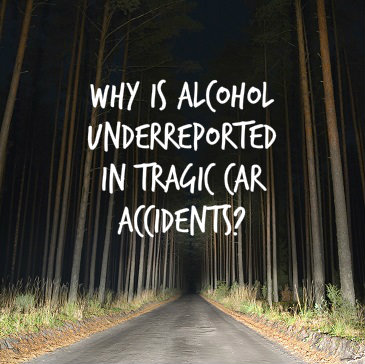 Study leader Ralph Hingson, Sc.D. of the NIAAA stresses the importance of having a clear understanding of alcohol’s role in the leading cause of death for an age group. Only with correct information can officials determine whether policies aimed at reducing alcohol-related deaths are effective. The size of the problem must be measured, tracked and then assessed in order to best create prevention and intervention measures.
Study leader Ralph Hingson, Sc.D. of the NIAAA stresses the importance of having a clear understanding of alcohol’s role in the leading cause of death for an age group. Only with correct information can officials determine whether policies aimed at reducing alcohol-related deaths are effective. The size of the problem must be measured, tracked and then assessed in order to best create prevention and intervention measures.
The researchers started by looking at all traffic deaths because the records are more accurate when compared with other types of accidental death. In approximately half of all U.S. states there is a requirement that the fatally injured driver be tested for blood alcohol levels. This information is then entered into the National Highway Traffic Safety Administration’s Fatality Analysis Reporting System database. The database results were then compared with death certificates from across the U.S.
The researchers found that the role of alcohol in traffic deaths in the decade studied was significantly underreported. Only three percent of the death certificates listed alcohol as a contributing cause of death, while the database rated 21 percent of deaths as legally drunk.
States Reporting Alcohol In Accidents Differs – Importance Of Best Practices
The findings were not consistent from state to state. In some states alcohol was rarely included on death certificate information, such as in Maryland, New Hampshire, Nevada and New Jersey. Other states, including Iowa, Minnesota, Kansas and Delaware, were better about accurately reporting alcohol’s role in the death.
The researchers noted that the discrepancy in reporting could be due to long waiting periods for receiving blood alcohol level test results. In most cases a coroner or medical examiner is required to file a death certificate within three to five days, which may be sooner than a toxicology report can be received.
The researchers stressed the importance of determining which practices are followed by states that seem to be reporting more accurately. Establishing best practices for other states to follow may make reporting on traffic fatalities involving alcohol more accurate.
Having laws in place requiring alcohol testing did not seem to result in better reporting. However, Hingson says that the results illustrate the wide gap between the number of accidental deaths related to alcohol consumption and those that are reported.
Even in our connected and technological age, stigma persists about drug addiction. Parents may not want to believe that their child could become a drug addict, and there is still much misunderstanding about things such as prescription drug abuse and its risks. Education is a vital approach for dealing with this stigma and these prevalent misconceptions, and a recent forum held by the Council on Addiction Prevention and Education (CAPE) and the Wappingers Central School District (Dutchess County, New York) is a perfect example of the value of the approach. The increasing rates of drug abuse in Dutchess County is of great concern to politicians and local experts, and the success of the mid-March program by the Wappingers school district has led numerous other districts to plan similar events in April, with the aim of curbing the growing issue.
What Happens At Drug Abuse Forums?
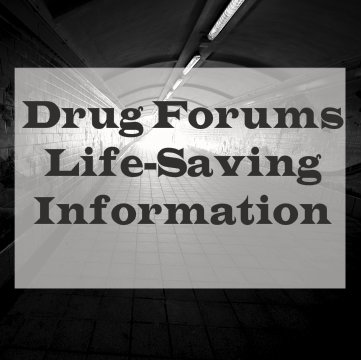 Drug abuse forums give those with direct experience of addiction and the process of recovery to share their stories, offering educational messages to the audiences, who are often teens but could also include their parents and members of the local community. This allows those in attendance to understand the sheer scope of the harm caused by drug abuse and addiction, and although not all of the stories end positively, many offer hope to those struggling with addiction by showing that recovery is possible. Talks will either be given by the ex-users themselves or by family members or loved ones. Due to their emotional nature, they are frequently poignant, moving and memorable.
Drug abuse forums give those with direct experience of addiction and the process of recovery to share their stories, offering educational messages to the audiences, who are often teens but could also include their parents and members of the local community. This allows those in attendance to understand the sheer scope of the harm caused by drug abuse and addiction, and although not all of the stories end positively, many offer hope to those struggling with addiction by showing that recovery is possible. Talks will either be given by the ex-users themselves or by family members or loved ones. Due to their emotional nature, they are frequently poignant, moving and memorable.
Lessons Learned The Hard Way
The event held in March featured many such stories told to a full auditorium at John Jay Senior High School. This was partially thanks to a new initiative on the part of high school coaches that makes attendance mandatory for student athletes, an approach praised by CAPE. The talks cut through the stigma surrounding addiction and showed that the process is very much one of “learning lessons the hard way.”
One speaker was Suzanne DeCosta, who spoke about her son’s addiction to narcotic painkillers and heroin. She described him as “smart, funny and lovable,” but during his teen years, what was once recreational drug use turned into addiction. DeCosta comments that “as a parent, you don’t ever want to believe your child is an addict,” but points out that this is wishful thinking—it can happen to anyone. Her son Michael overdosed on heroin, and has had numerous stretches in rehab. At present, he is two years sober, but the family is more than aware that it will require continued effort on his part to stay in recovery. They say they’re lucky to have him alive.
Other stories didn’t have the same positive, uplifting ending: Marcia Grant’s son, Roger, died at the age of 41 from a heroin overdose in a motel room. She described her son in his youth as “bright” and “affectionate,” but added that he was impulsive and reckless, pointing out that he broke a lot of bones. Doctors advised them that he would experience a lot of pain, and Marcia says they were right, “Pain, both physical and emotional […] kept bringing him back to drugs.”
The first signs of a problem came in his teen years when Roger’s grades began to slip and his behavior changed notably. He started to lie and his moods changed, and eventually—at the age of 22—he admitted to his issues and his parents tried to get him help. He was in and out of rehab centers, attending 11 inpatient programs, but would only have brief periods of sobriety and stability. He almost overdosed several times, and got into trouble with the law through his addiction. “At the time we didn’t realize that there was no simple fix,” said Martha. She added that he’d wanted to warn children about the risks of drugs, and she wanted to pursue this goal for him, in his absence.
Why These Events Are Essential
Drug education is vital, but dry repetition of statistics, risk ratios and far-off consequences don’t always pack much of a punch, particularly from an emotional perspective. The stories shared at drug abuse forums provide evidence for the potential consequences, but also offer a personal insight into the nature of addiction and the difficulties faced in recovery. The stories are real, told by somebody at the center of it all, and have more power to capture the attention of teens as a result. The consequences of drug abuse might not come immediately, but these speakers remind teens and parents that they do come eventually. If you don’t learn the lessons now and try to get clean, the problem will snowball until you’re forced to learn them the hard way. As more of these messages get out, fewer teens will need to learn them from life-threatening, first-hand experience.
Have You Talked To Your Teen About The Dangers Of Inhaling Alcohol?
14 May 2014
The Changing Face Of Heroin Addiction
Heroin abuse, addiction, and overdoses have all been rising over the last decade. New users of heroin have risen from 90,000 to 156,000 per year. The use of other drugs in the U.S. has dropped over the same time period. In addition to the overall increase in use of heroin, demographics are also shifting. Once a drug concentrated in the inner cities, heroin has spread to the suburbs and to rural areas. Today a heroin addict could be anyone of any socioeconomic status, age or race.
Who Is Using Heroin?
There was a time when you would be shocked to learn that an upstanding citizen and contributing member of society was hooked on heroin, but today the drug has infiltrated all areas of the country and all levels of society. According to one newsworthy profile, a woman who is a teacher and a mother living in Putman County, New York is also a heroin addict with track marks running down her arms. She admittedly came to work high on heroin and even used the drug in the staff bathroom during the day.
Another story tells the tale of a retired police captain moving his family from the city to the Chicago suburbs, hoping to distance his children from harmful influences. Instead of finding a more wholesome environment, his teenaged son was introduced to drugs and eventually overdosed and died from using heroin. He was not the only one among his teenage friends to meet that fate.
In Vermont, one of the most rural and sparsely populated states in the country, heroin use has reached epidemic proportions. The situation is so dire that the governor devoted an entire State of the State address this year to the issue of heroin abuse and overdose deaths. These are just a few of the stories demonstrating how the face of heroin addiction has changed over the last decade. You can no longer assume that all heroin addicts are inner city junkies. They are all around you.
What Accounts for the Rise in Heroin Abuse?
The shift in populations that use heroin and just how epidemic the problem is seem puzzling at first glance. There is a simple reason for the changes and it can be traced back to prescription painkillers. Narcotic painkillers are similar to heroin. They are both opioids, meaning they are derived from the opium poppy. They act in similar ways in the brain, produce the same kind of high and lead to the same devastating addiction.
For years, doctors have been prescribing narcotic painkillers in large amounts because they are good at what they are supposed to do: they control pain. The downside is that these medications are highly addictive and susceptible to abuse. With more prescriptions floating around and being passed and sold from one person to the next, many people became addicted. As the problem grew, doctors prescribed fewer narcotics and tighter restrictions were placed on these drugs. Those already hooked on them struggled to get the pills they needed.
Drug dealers had the answer for these narcotic addicts desperate for the next fix: cheap and available heroin. Heroin is now cheaper and easier to find than pain pills, so addicts naturally turned to this illegal drug to feed their habits. The drug cartels have seen an opportunity and have made sure to meet the demand with supplies of cheap heroin in cities, suburbs and rural states like Vermont. The face of heroin addiction has changed and unless steps are taken to treat these people and to prevent new addictions, the problem will continue to grow.
Read More About The Chronic Use Of Heroin Being On The Rise
At one time Oklahoma ranked number one in prescription drug abuse. After implementation of a statewide prescription drug monitoring program (PDMP) and the concerted efforts of lawmakers and law enforcement the state has moved down the list to number eight in the nation. But Oklahoma is not satisfied and continues to try and overcome the scourge of prescription drug abuse.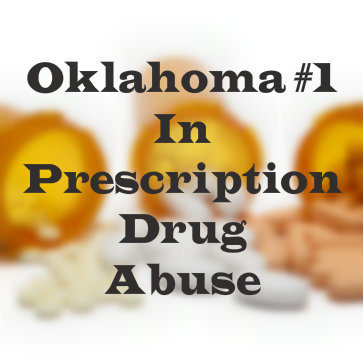
How Big Is The Prescription Drug Problem?
Last year in Oklahoma doctors and medical professionals wrote 10 million prescriptions for powerful opioid painkillers and other scheduled drugs. Those prescriptions were written to 142,369 patients, which averages out to 68 prescriptions per patient. Pharmacists filled those prescriptions with 597 million pills.
The detailed information is available thanks to the state’s PDMP, which electronically records the data. The hope is that doctors would look online before writing a prescription to see how often each patient has been given a script for heavy-duty medication. But reviewing the data it became evident that few doctors, just one-fourth, were using the PDMP prior to writing prescriptions for patients. Doctors are not yet legally required to check the PDMP first, but that could change.
Death Toll Rising
In 2012 there were 844 fatal overdoses in Oklahoma. That means that year more people died from drugs than were killed in car crashes, at 708. The majority of drug overdoses were accidental, and 75 percent involved prescription drugs.
The most dangerous prescription drugs in terms of overdose risk are opioids (e.g.: Vicodin, Lortab, OxyContin, Percocet), and the anti-anxiety medication Xanax. Too often people mix medications with alcohol, or take multiple meds at the same time. The stats show that two people per day are dying in Oklahoma because of prescription drug overdose. Deaths related to prescription drugs have risen 80 percent there in the past 10 years, and Oxycodone and Hydrocodone deaths in the state have quadrupled in that time.
The problem is most acute among 18- to 25-year-olds with a 10.9 percent abuse rate. Overall, 5.2 percent of Oklahomans over age 11 abuse the medications. Apart from the risk of fatal overdose, another concern about the epidemic of opioid abuse is where it tends to take people. Experts in the state say that around 85 percent of heroin users started out abusing prescription opioids.
Oklahoma is not unique. Across the country abuse of prescription drugs continues to claim a shockingly high number of lives. And where opioid use is beginning to drop, there is the selfsame increase in heroin use. Which makes it that much more important that we stop the problem before it moves to the street. We can monitor and prevent much prescription drug abuse through PDMPs. If we don’t, the problem will quickly transition to street drugs like heroin where monitoring and intervention is far less likely.
12 May 2014
Is Addiction Coverage Really Equal?
In recent years, two federal laws have guaranteed fair and equal coverage for mental health and addiction treatment. Those working in the field of addiction care are not so sure that the intent of those laws is really playing out in reality. People struggling with substance use disorders may not be getting the insurance coverage they need in order to get well.
The Federal Laws
In 2008, President Bush signed the Mental Health Parity and Addiction Equity Act. The law is supposed to ensure that health insurance plans are no more restrictive when it comes to mental health or addiction care than they are with other types of medical care. In other words, deductibles, co-pays and limits on treatment cannot be greater for mental health or addiction than anything else in the plan. The law does not require that plans cover these types of care at all.
President Obama’s Affordable Care Act added to the previous law by listing mental health and addiction treatment as essential benefits that must be covered by all health insurance plans, including those offered by small businesses and those for individuals. Prior to this law, most large company group plans included such coverage, but smaller plans often did not.
Equal Coverage Not So Equal
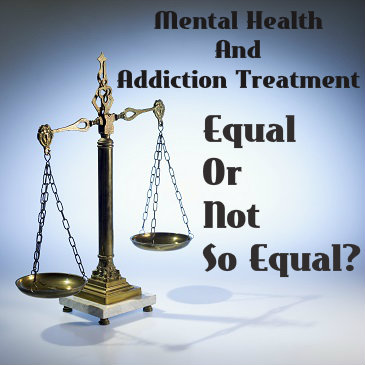 The two laws signed by Presidents Bush and Obama were intended to make sure that people needing care for mental health issues or for addiction would get the treatment they need. One of the biggest barriers to getting treatment has always been cost. If an insurance plan does not cover treatment, or if the restrictions on treatment are significant, someone who needs help may not get it. Those who are in the field of treatment for addiction are finding that the laws’ intentions are not always playing out as intended.
The two laws signed by Presidents Bush and Obama were intended to make sure that people needing care for mental health issues or for addiction would get the treatment they need. One of the biggest barriers to getting treatment has always been cost. If an insurance plan does not cover treatment, or if the restrictions on treatment are significant, someone who needs help may not get it. Those who are in the field of treatment for addiction are finding that the laws’ intentions are not always playing out as intended.
The National Association of Addiction Treatment Professionals conducts ongoing surveys and has reported that there are many denials of coverage for addiction care. Behind more than half of those denials is a debate over what is medically necessary. Unlike other medical conditions, like heart disease for instance, medical necessity for addiction is not always perfectly clear. The insurance plans need not cover care that is not deemed medically needed. Caregivers cite the changing laws as the reason insurers are getting tougher about what they will and will not cover.
One of the biggest battles over care for addicts is the number of days of coverage for residential stays. Many insurers want to cap the stay at a week or less, while addiction experts insist that patients need up to three months of treatment. Some insurers insist that treatment need not be inpatient care and that they will cover a few months of outpatient care. What is right for each patient, though, is highly individualized. Some may succeed with outpatient treatment, while others have nowhere safe to go and really need a long stay in a residential facility.
The changing laws regarding care for addiction and mental health represent an important societal shift in attitudes toward those struggling with these very real medical conditions. The shift is positive and the laws help, but there are still many bugs to work out. As insurers debate how to implement coverage that meets the requirements of the laws, addiction caregivers try to pick up the slack. It may take more time to ensure that everyone gets the help they need, but the changes so far are just not enough to reach everyone.
09 May 2014
Overdose Fatalities On The Rise In New Jersey
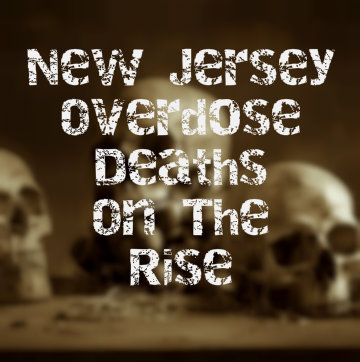 The National Safety Council (NSC) is a non-governmental, not-for-profit agency dedicated to promoting health and protecting life in the United States. The organization reports on and works to improve conditions in homes, at work and on the road. A recently published NSC report finds that drug and alcohol overdoses are the number one cause for accidental death in New Jersey – more than car accident fatalities.
The National Safety Council (NSC) is a non-governmental, not-for-profit agency dedicated to promoting health and protecting life in the United States. The organization reports on and works to improve conditions in homes, at work and on the road. A recently published NSC report finds that drug and alcohol overdoses are the number one cause for accidental death in New Jersey – more than car accident fatalities.
Like the rest of the nation, New Jersey recognized the wave of prescription drug abuse and responded strongly. State, along with federal officials, clamped down on access to prescription drugs. Making prescription drugs harder to get was seen as one way to reduce fatalities.
How Is The Problem Being Handled?
While efforts to place tighter controls has been effective to some extent, in another it may have only renamed the problem. Limited access has led to the street value of pills costing somewhere around $40 a piece, so many people simply switched to heroin, which is from the same family of drugs as prescription painkillers. It’s more powerful and less costly than it’s ever been, allowing drug abusers to switch to heroin when prescription pills are out of reach.
Substance abuse experts say that around 800,000 people in the Garden State have a drug or alcohol problem, yet just 10 percent ever ask for help. One clear way to bring down the number of accidental overdoses is to do a better job of convincing citizens to get help to break free of substance abuse.
The NSC says that the surge in overdose fatalities combined with the number of falls by senior citizens makes New Jersey homes the number one danger zone. New Jersey is not alone, however. Alcohol and drugs were reported as the leading cause of death in 20 states across the nation.


